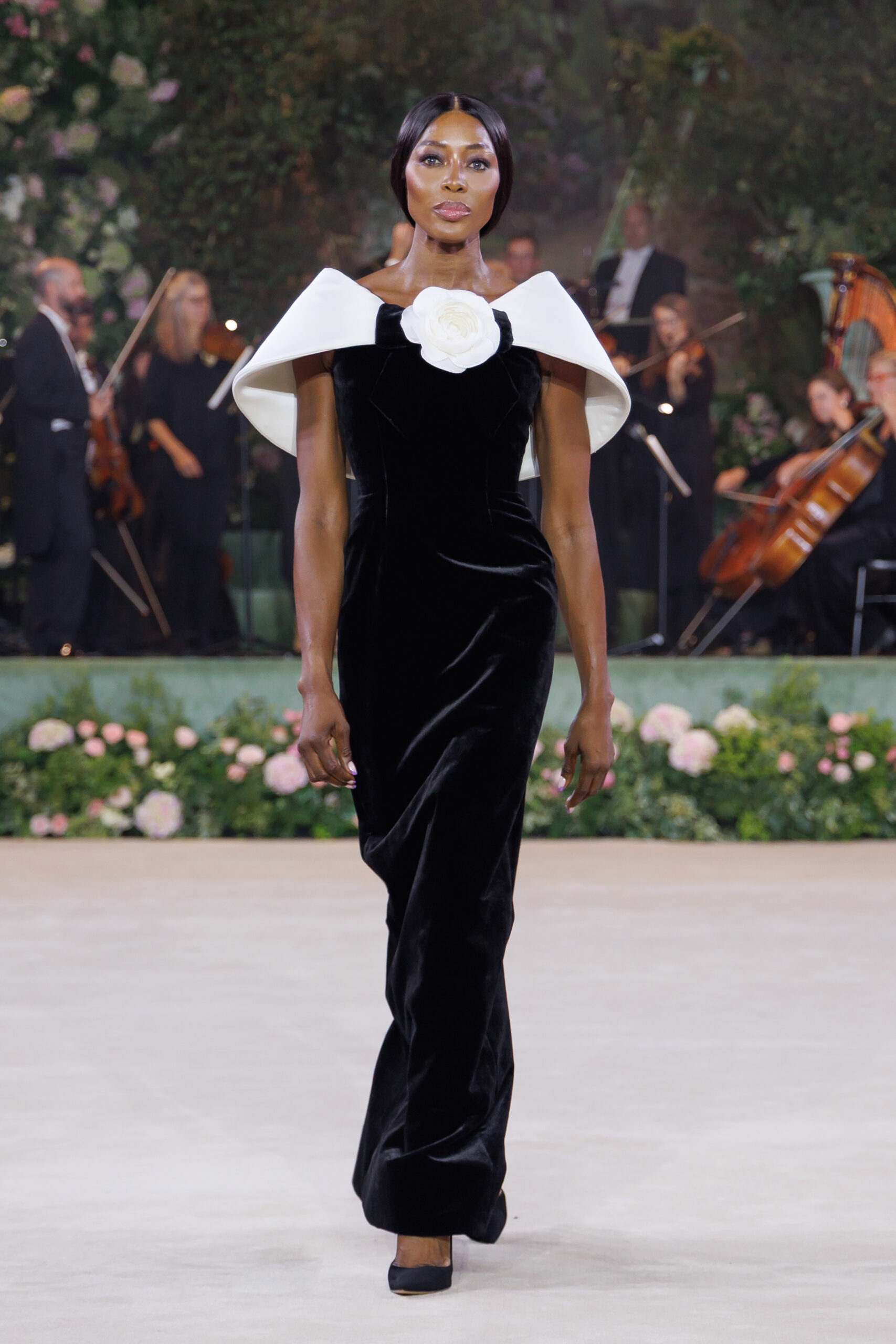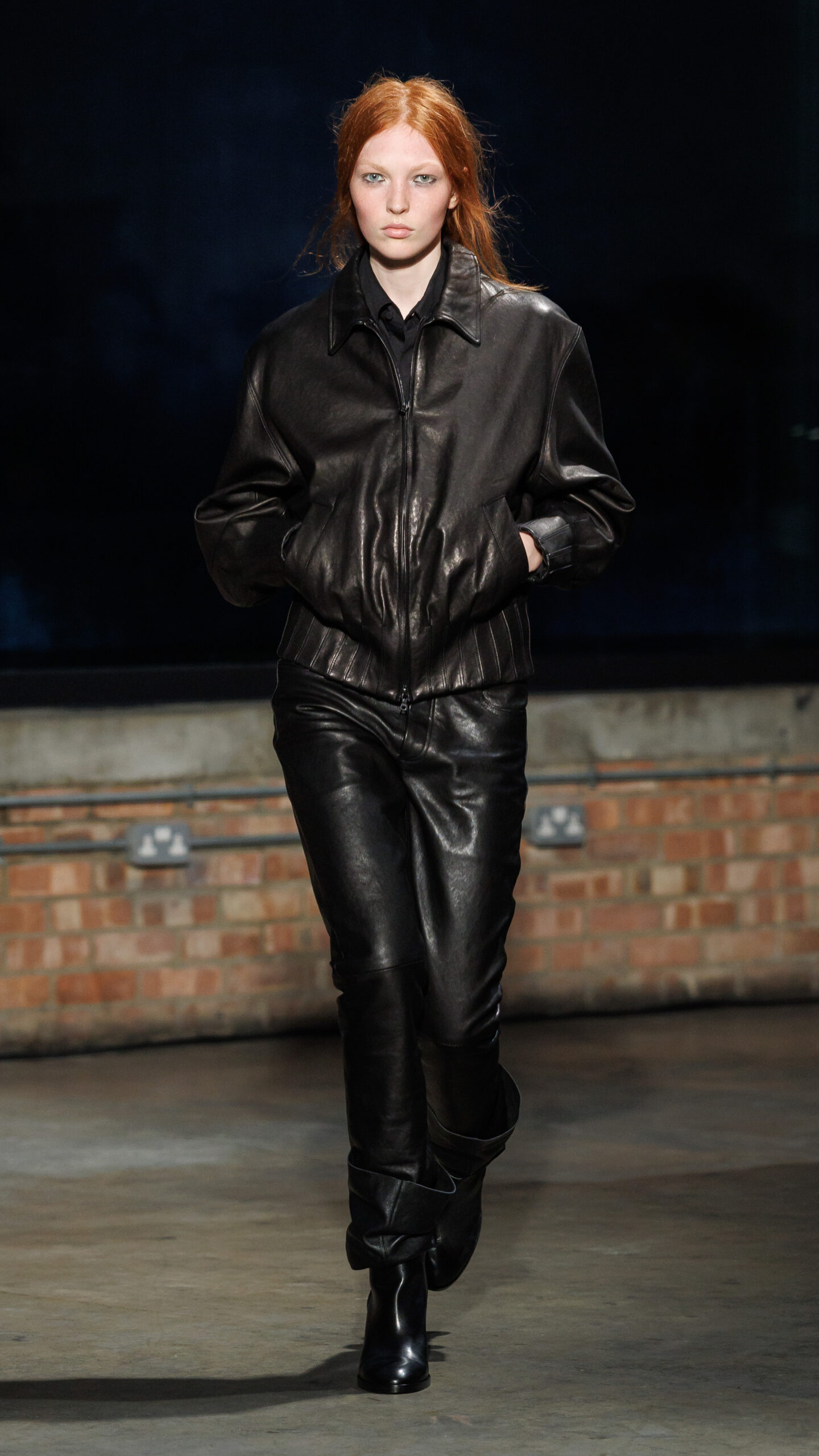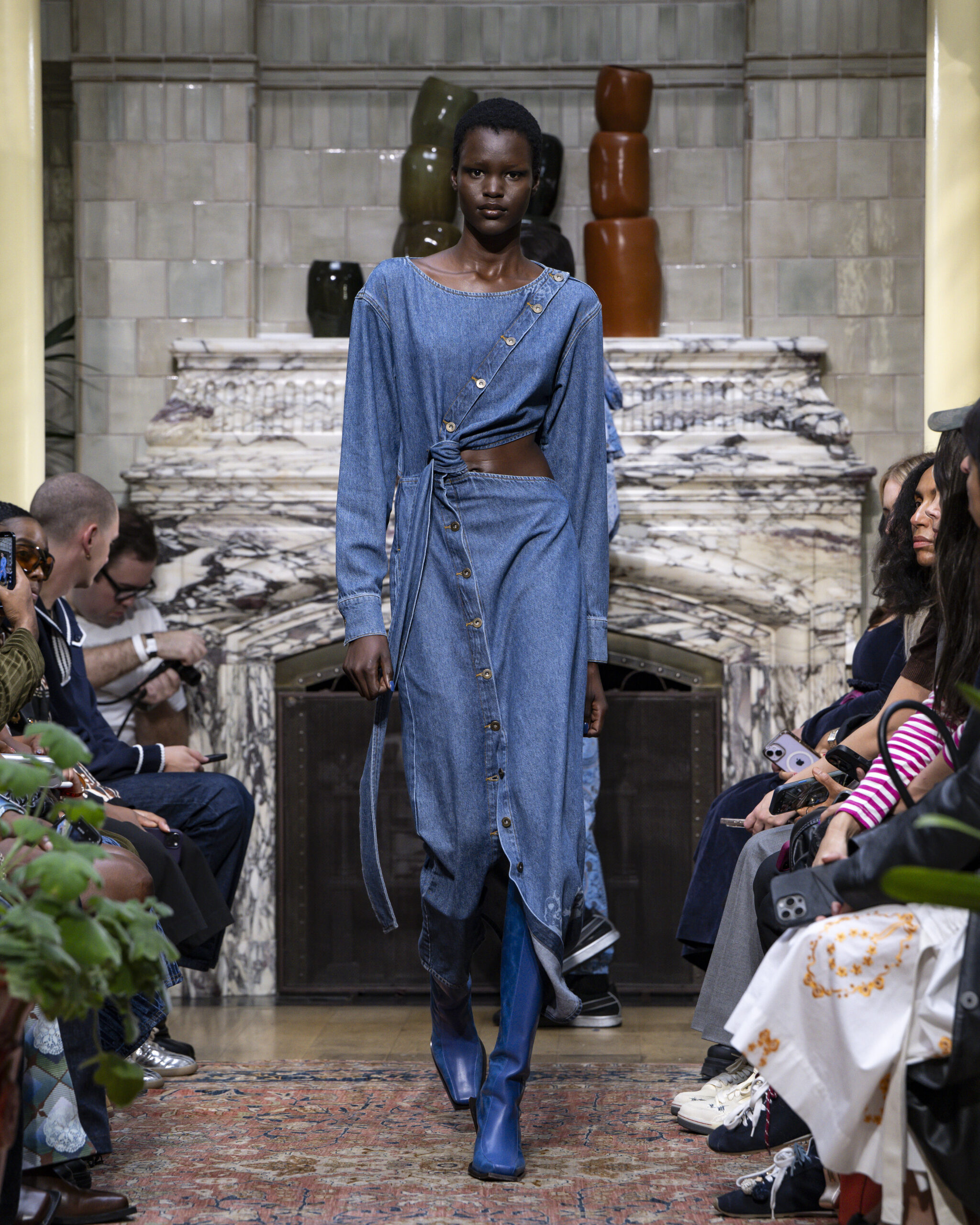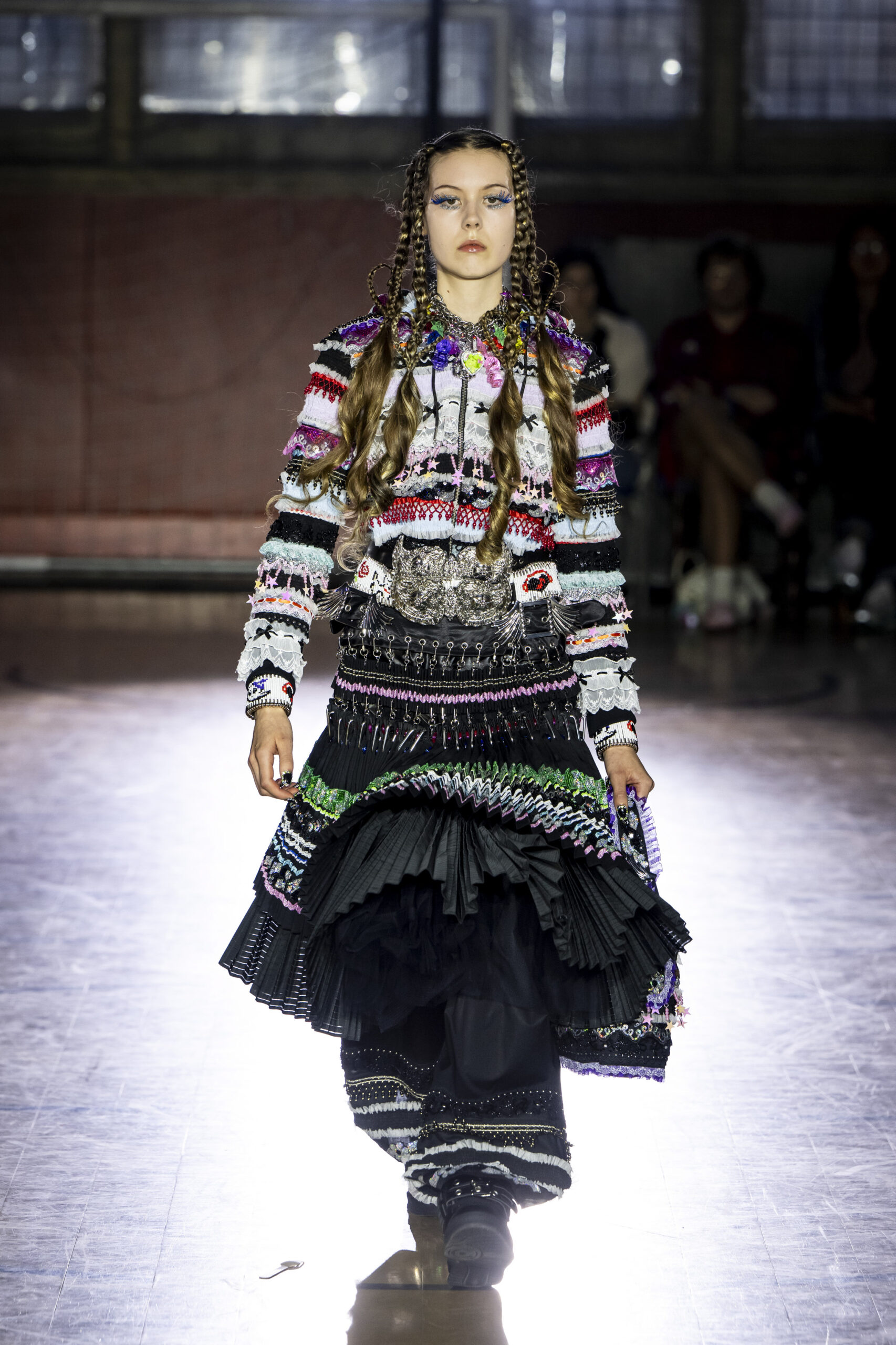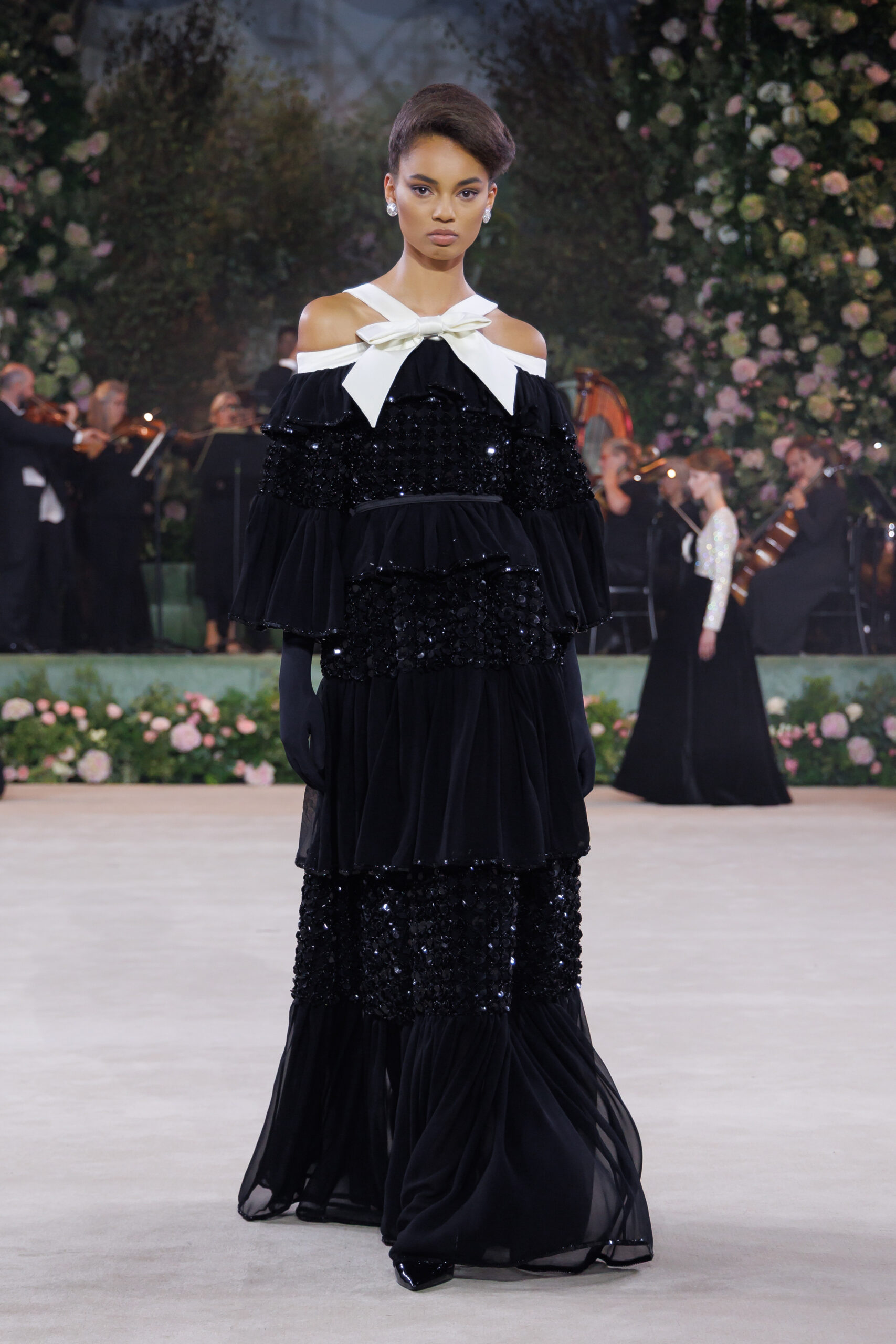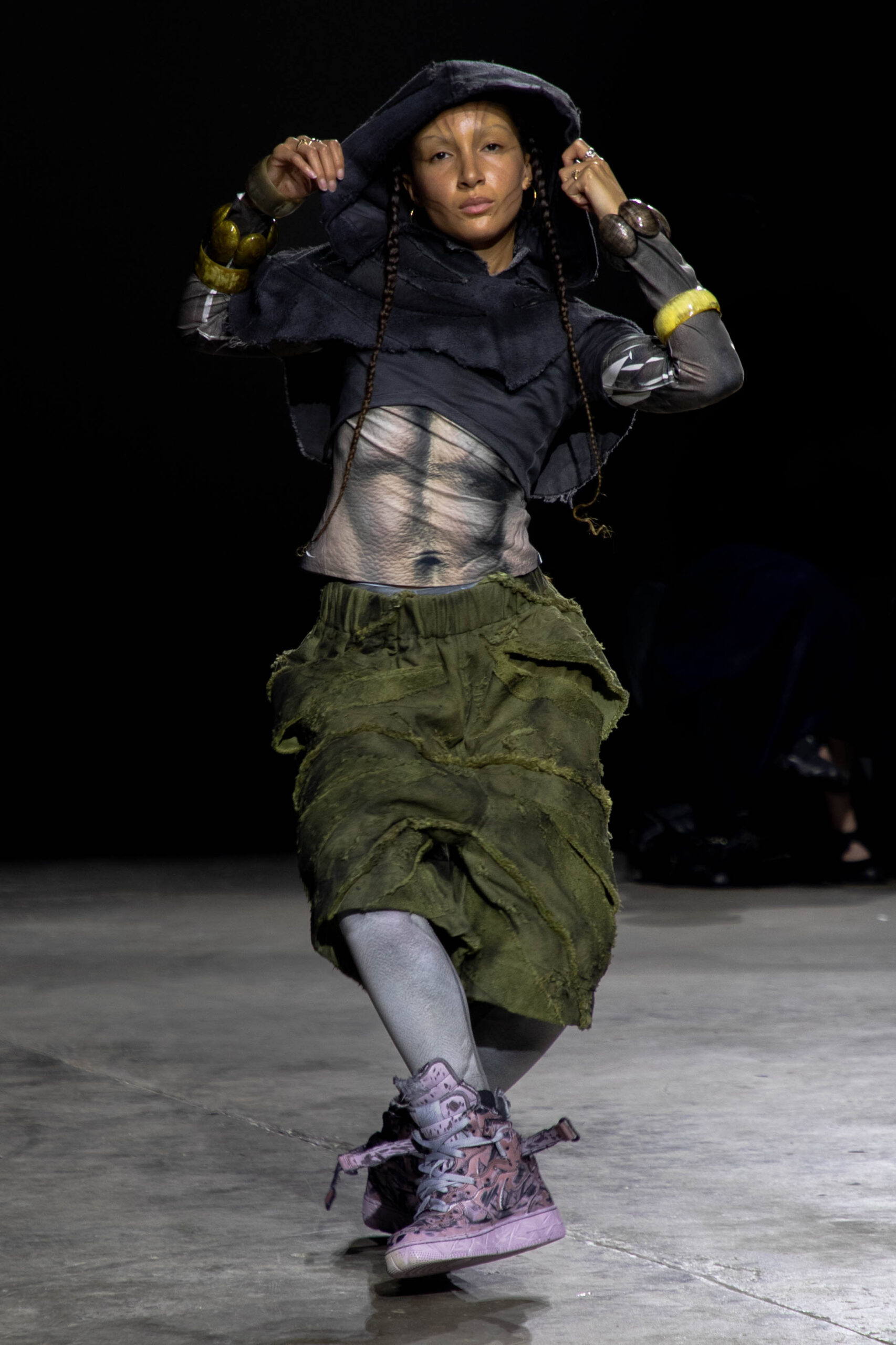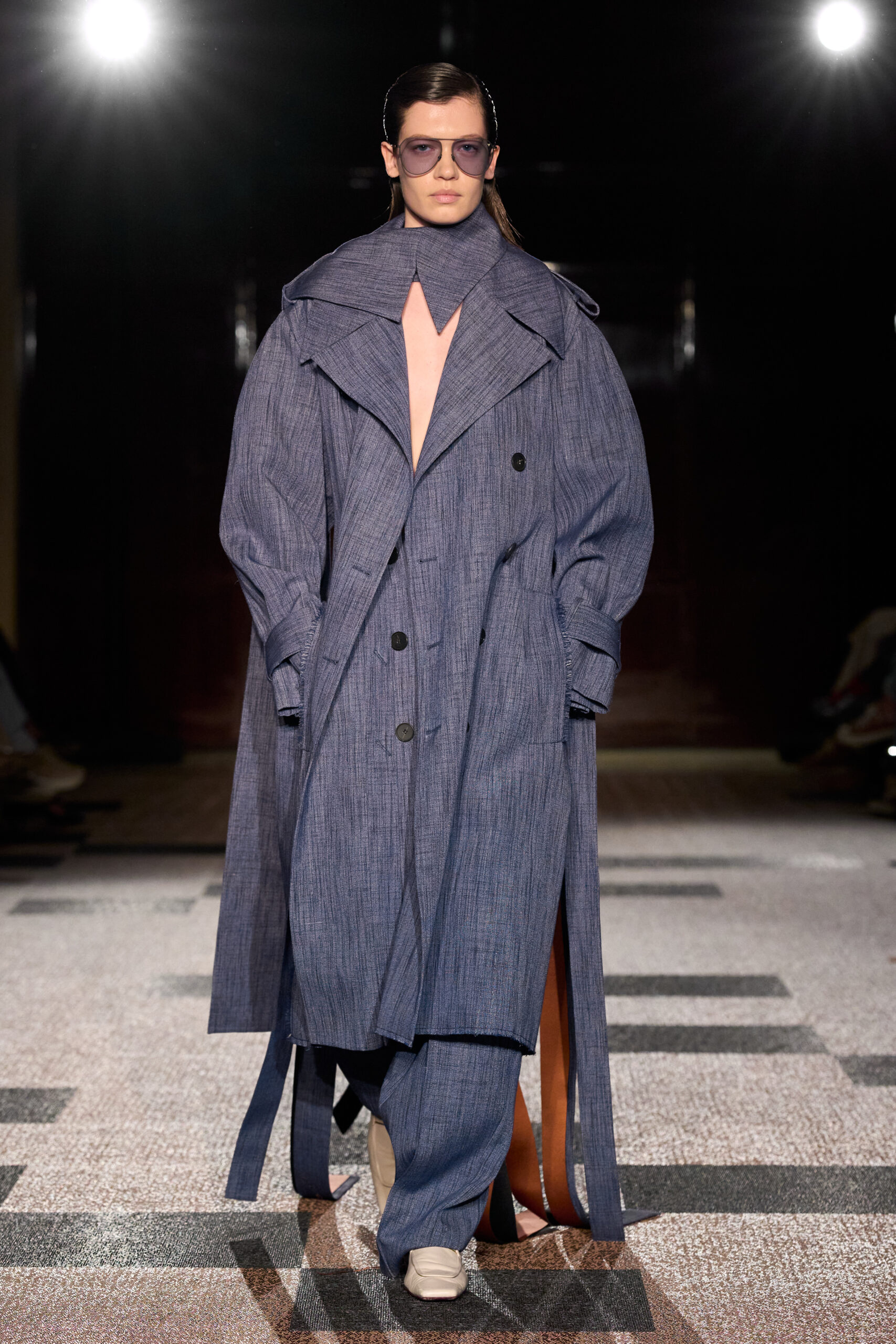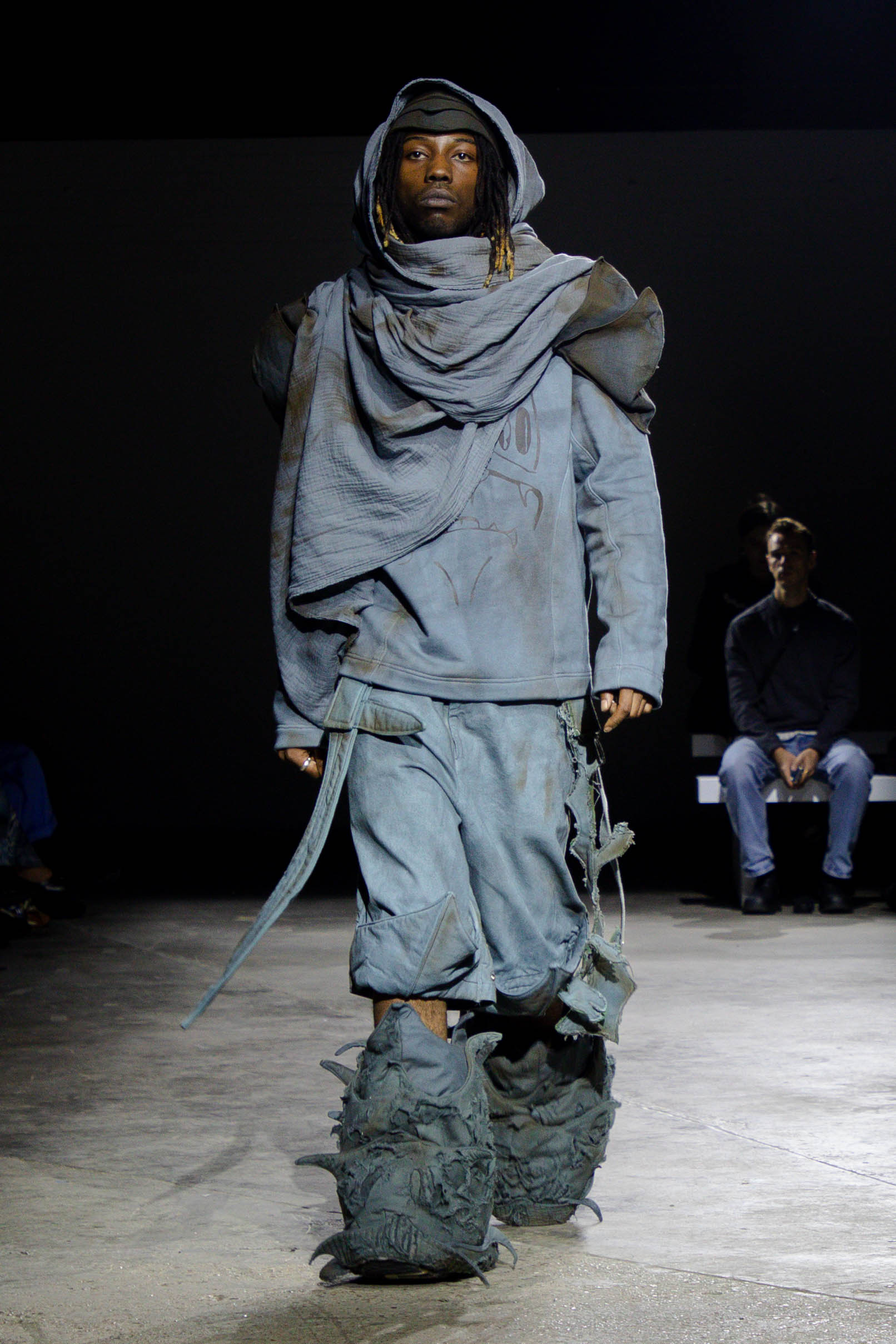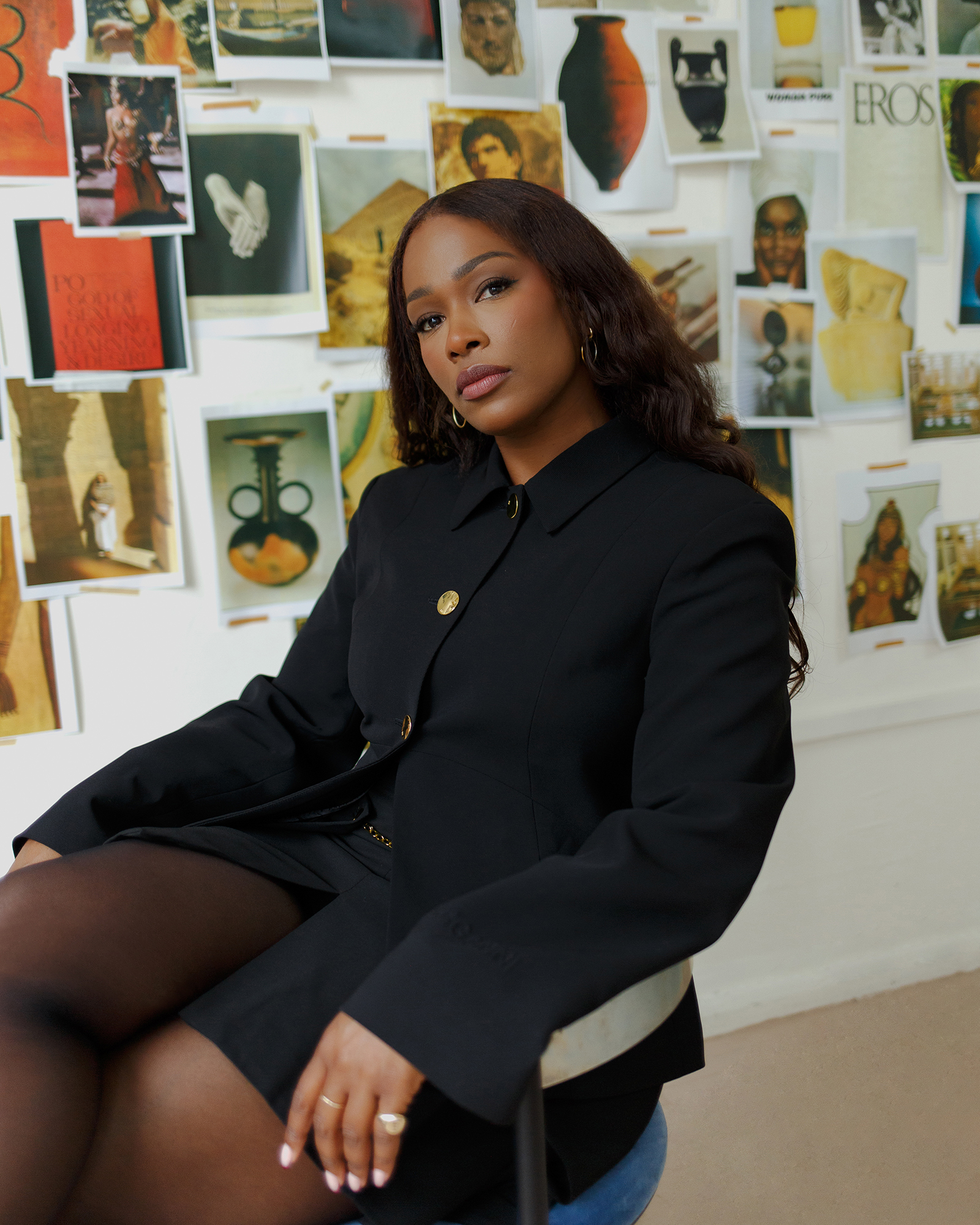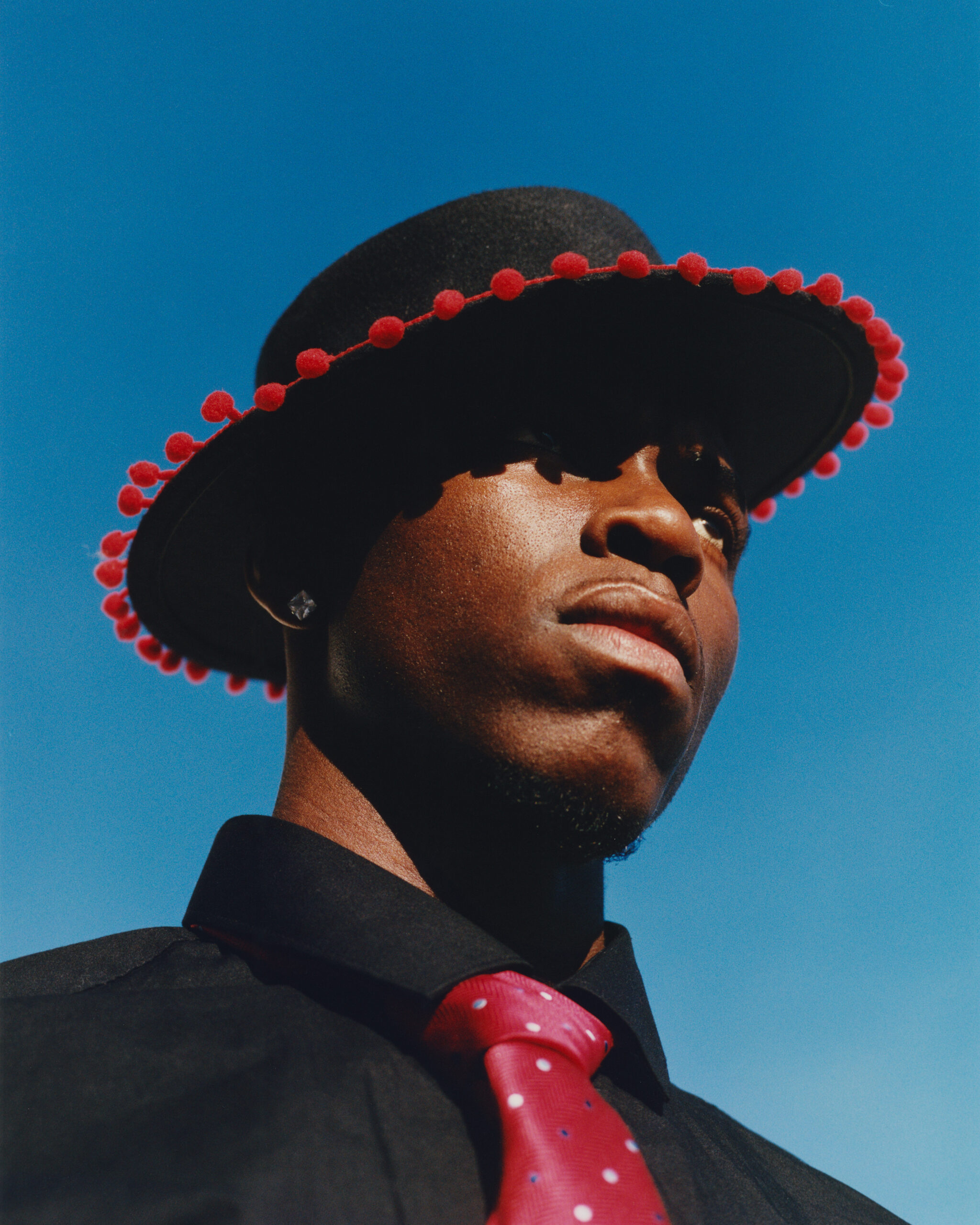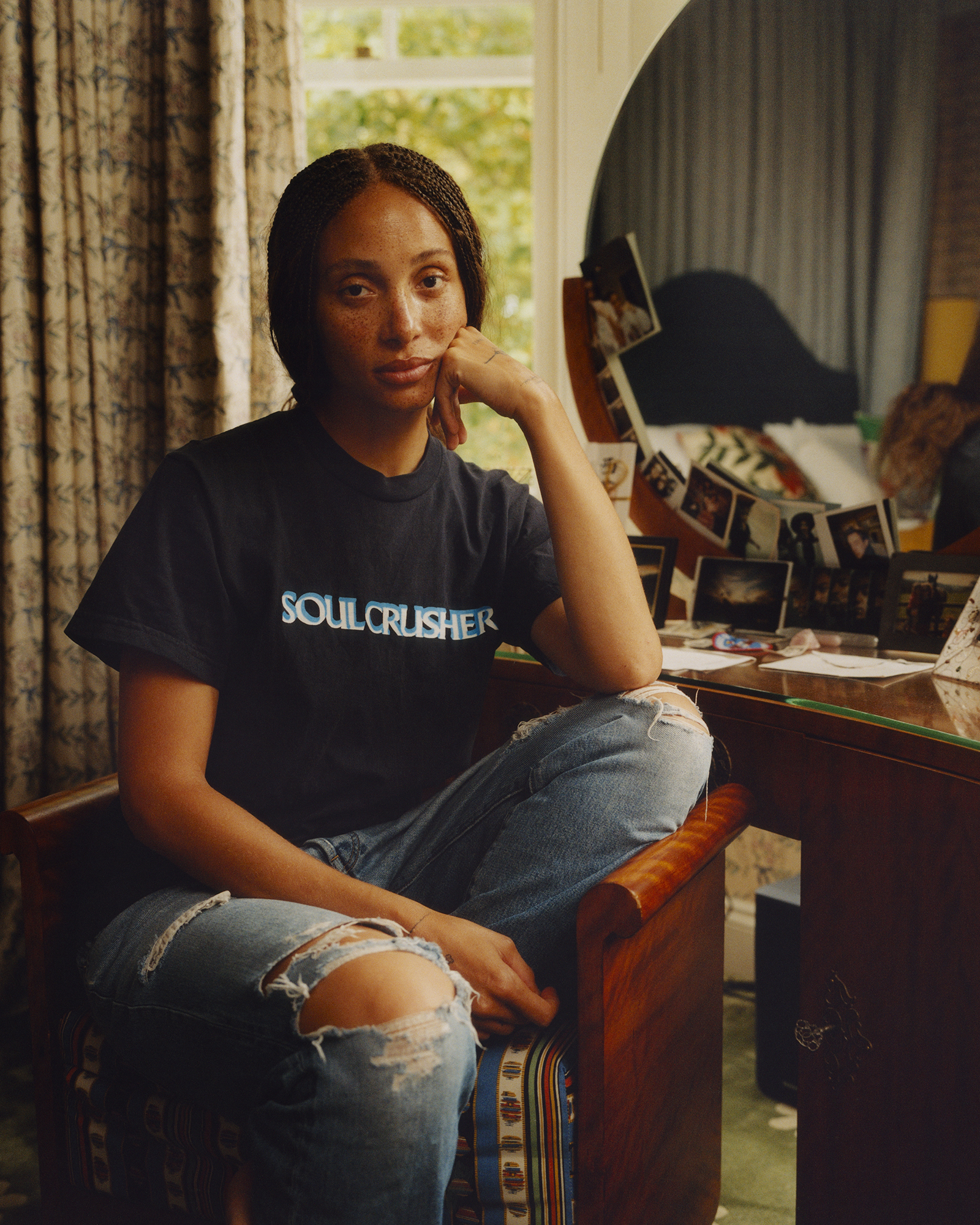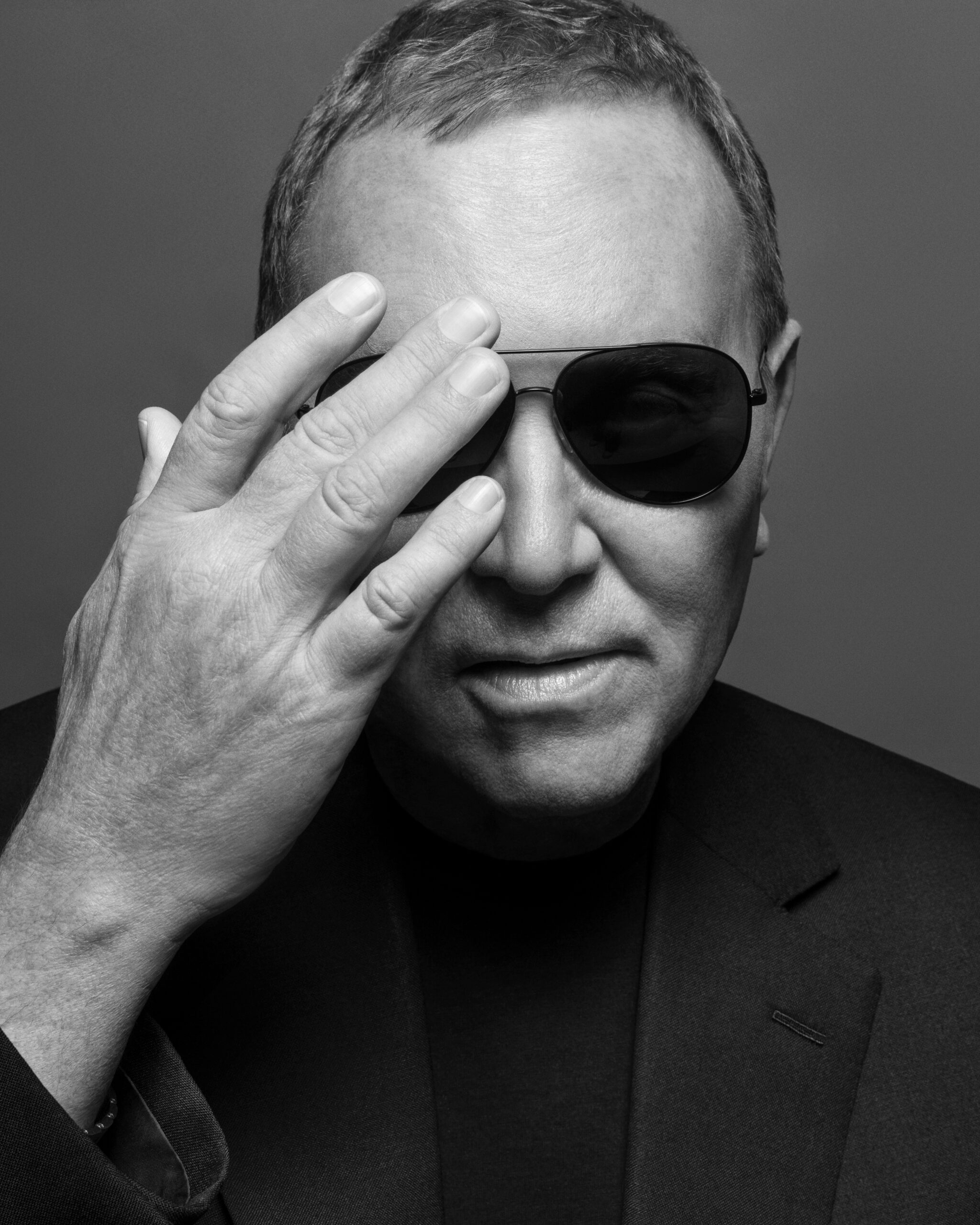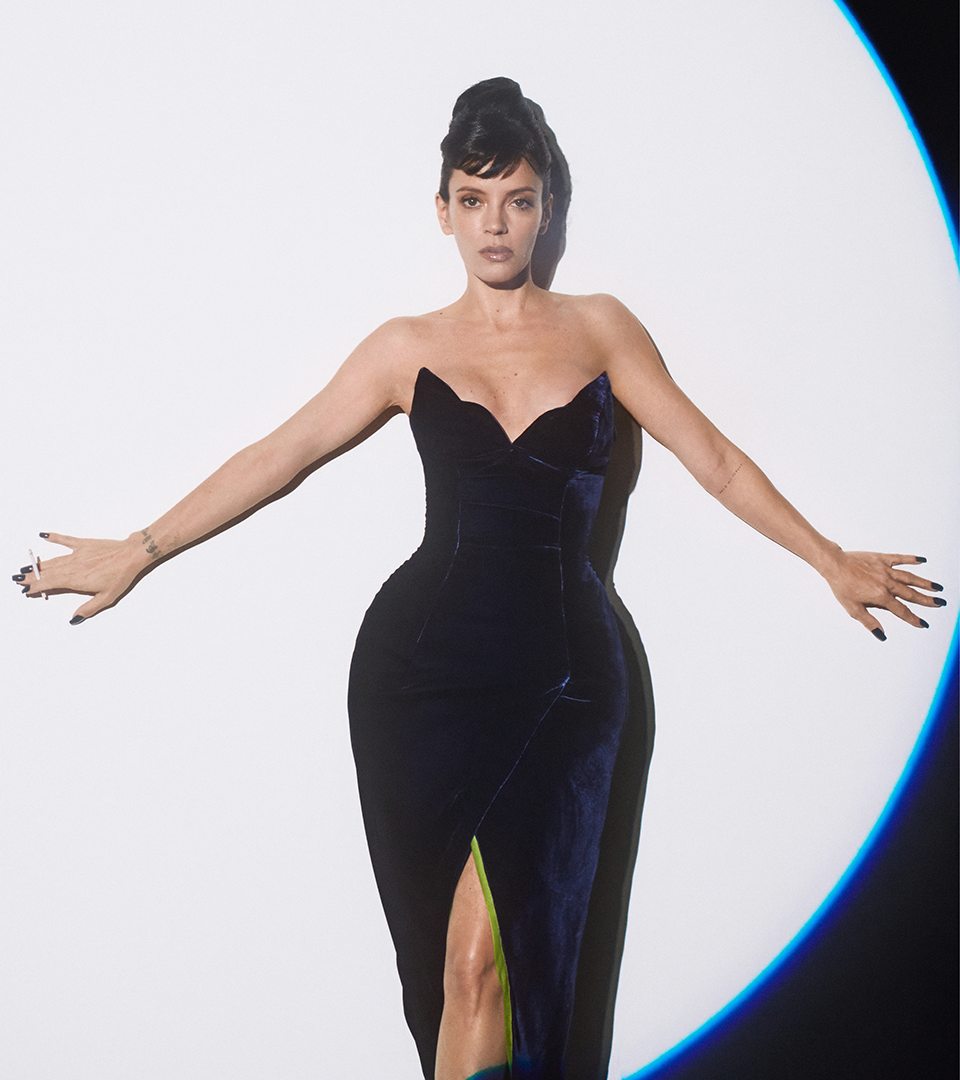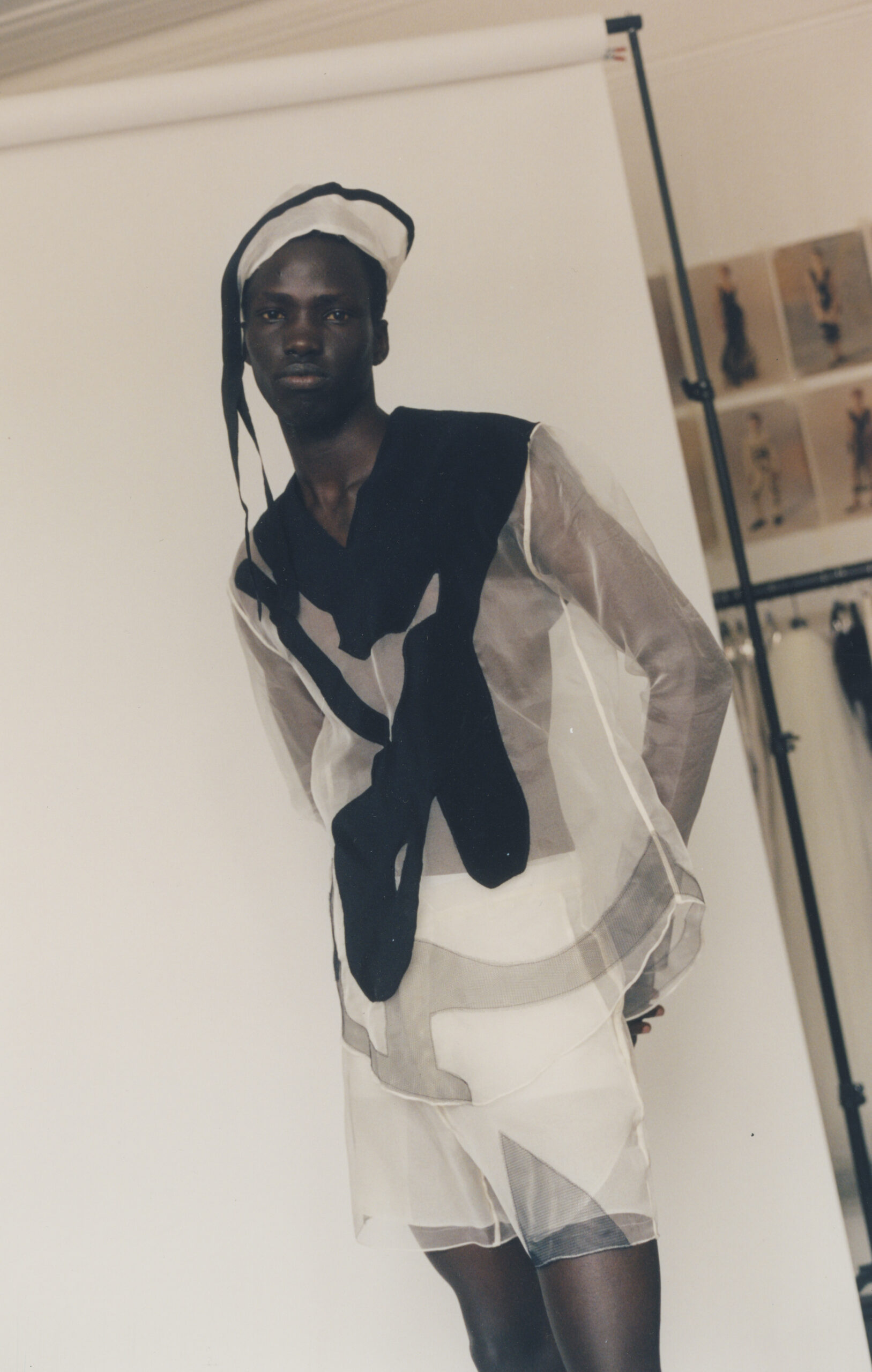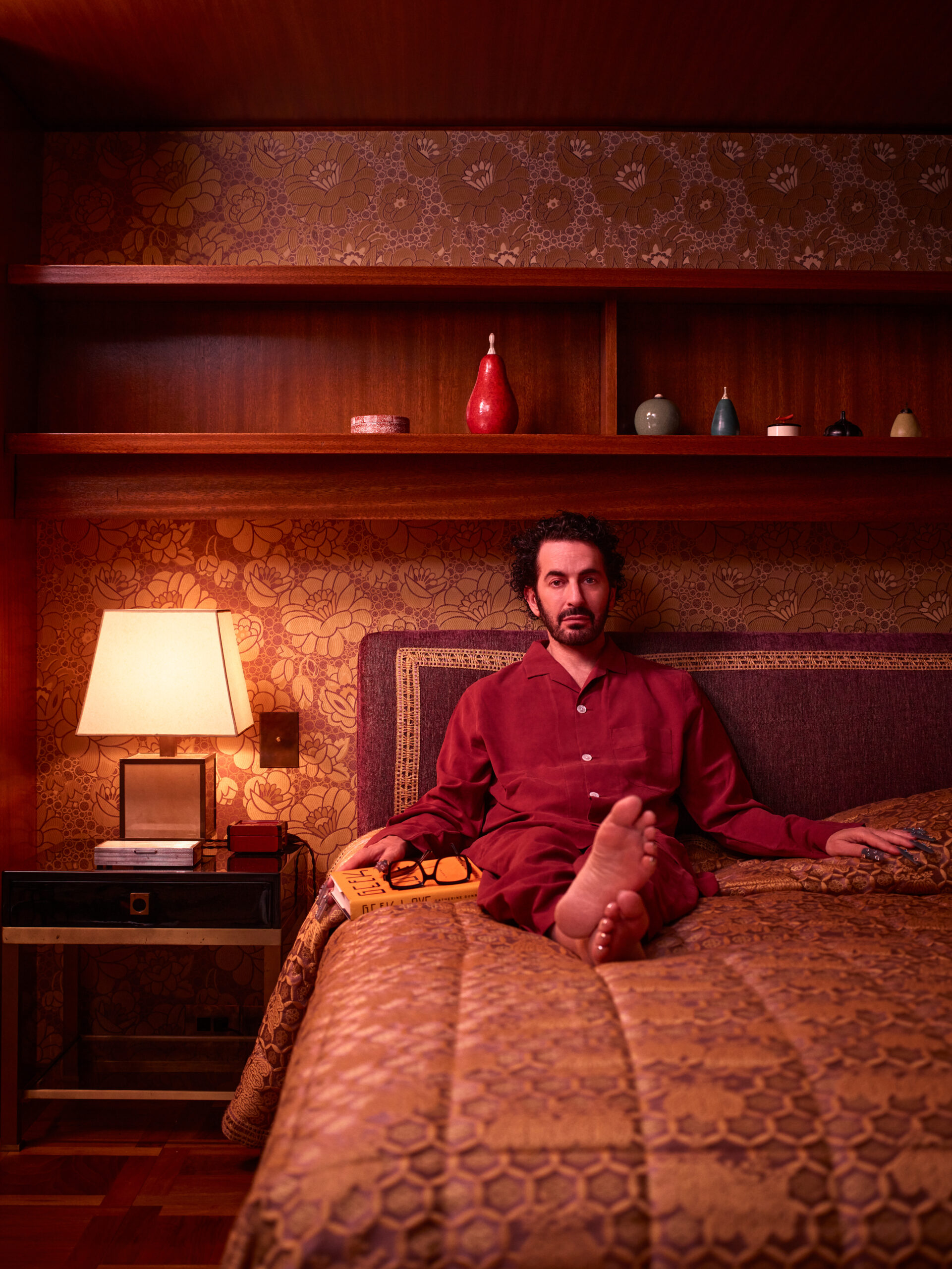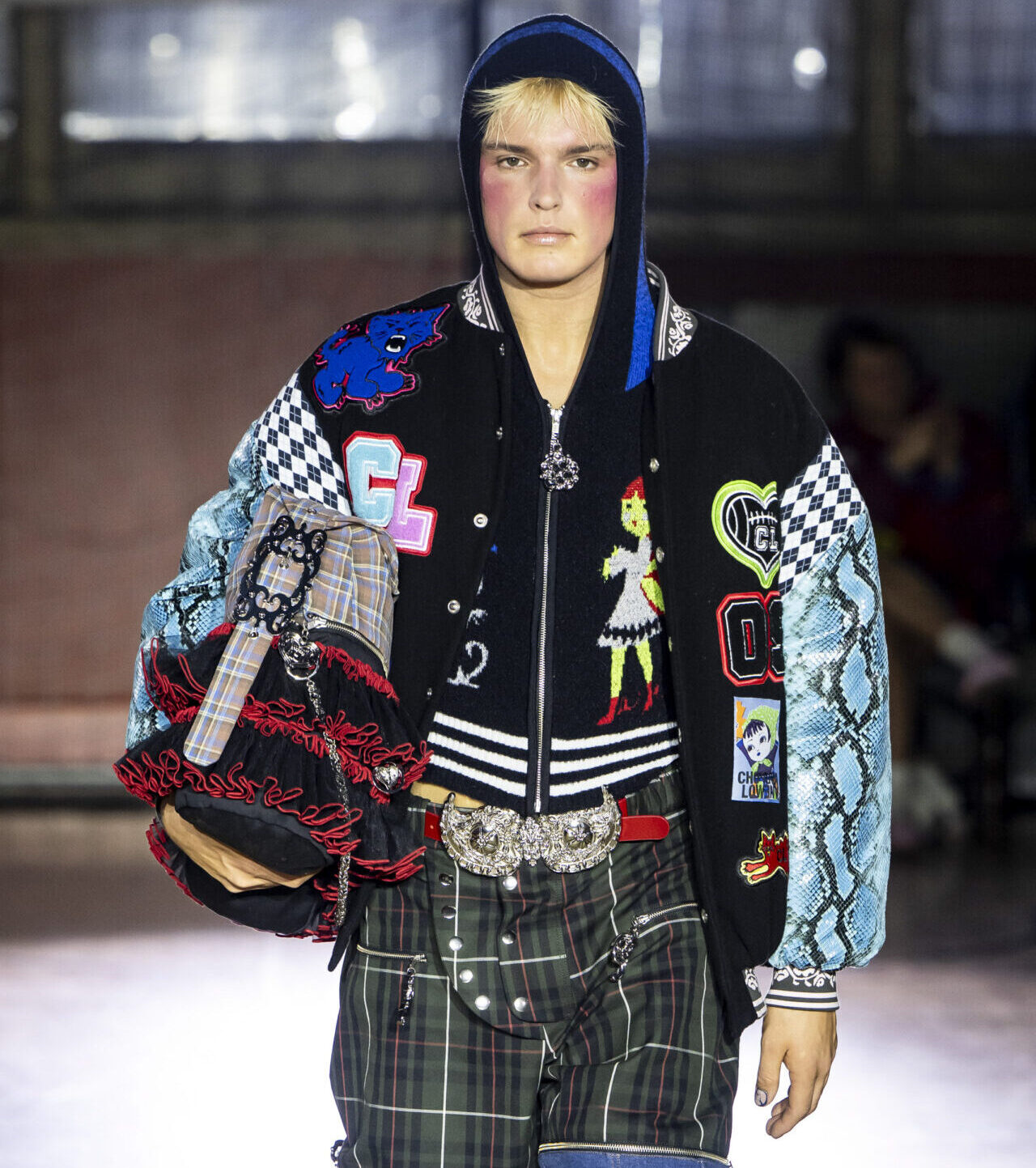
From Clubhouse Spirit to Couture Spectacle:
The Many Londons
on Show
Anders Christian Madsen reviews the first two days of Spring/Summer 2026 collections at London Fashion Week.
Like many others in this city, I started my show-going career at London Fashion Week. The first show I ever went to was Richard Nicoll’s polka dot collection in September 2006. I can still remember the community feeling: the air of togetherness and aspiration that filled the tent in Holland Park. As Londoners, we all remember that feeling – that era of London fashion – and want to bring it back. On Friday evening in a sports hall in Notting Hill, Chopova Lowena did their utmost to evoke that energy for a new generation. Fueled by memories from school and the bullying they experienced, Emma Chopova (Bulgarian-American) and Laura Lowena-Irons (British) presented a defiant collection founded in football and cheerleading uniforms infused with the silhouettes of Southern Bulgarian Karakchani costumes.
They applied the intricate craftsmanship that characterizes their work to American high school tropes in a varsity-folklore fusion that fulfilled its plan, but they couldn’t have premeditated the atmosphere the audience created around it. “In the Chopova Lowena clubhouse, we’re all on the same team. This season, we celebrate unity: the sports, symbols, and spirit that bind us together,” the show notes stated. It was reflected not only in the countless show-goers clad in their designs, but in the community feeling of goodwill and excitement they exuded. It was the ideal London Fashion Week experience: creativity, curation and a sense of inclusive intimacy wrapped into one.
Like the rest of the industry, London Fashion Week is rebooting this season. Where Milan and Paris are reshuffling and welcoming new designers at the big houses, the English capital is carrying out its first fashion showcase under the leadership of Laura Weir as CEO of the British Fashion Council. Weir – whose last position was as Editor-in-Chief of ES Magazine – has made plans to put London Fashion Week back on its pedestal of global fashion influence. To my generation, that conjures memories of an era when every show was unmissable. From Gareth Pugh to Meadham Kirchhoff and Christopher Kane, you felt like you had to be there; that, if not, some possibly paradigm-shifting fashion moment might happen without you.
When it comes to London fashion – so rooted in emerging designers – that feeling is probably generational. I hope the show-goers who are the same age now as I was when I first went to London Fashion Week felt that way at the Yaku show on Saturday morning. Yaku Stapleton, from St Albans, is one of the five London designers featured in the first issue of 72 Magazine. His clothes are steeped in Afrofuturism and digital role-playing games, all of which he brought to life in the LFW nucleus of 180 Strand. He showed his trippy, textural, reptile-inspired, ancient-futuristic fantasy on performance artists, who moved around the cinematically-lit dystopian set as if they were hunting or hiding. Scored with a soundtrack that mixed UK grime, jazz and medieval melodies, it was totally beautiful.
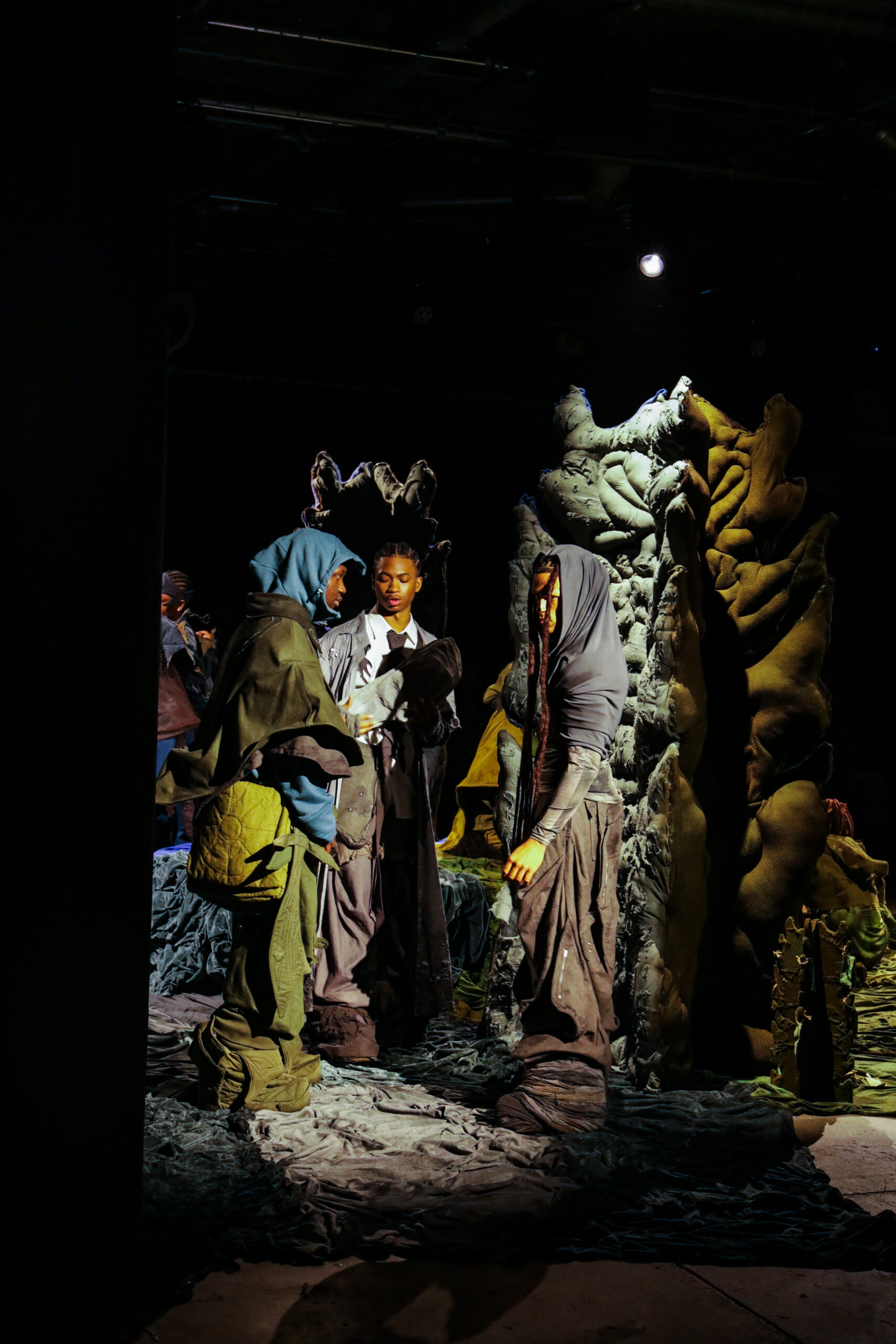
YAKU
To the naked eye, Yaku’s work borders on the cartoonish, but as he works through his crazy references and distills and refines them, the expression transforms into a sophisticated aesthetic that could sit next to Rick Owens and Moncler on a shop floor – in a London way. As Stapleton said, “Community remains at the heart of what we do. For us, the presentations are not commercial showcases but gatherings.” You could say the same for Roksanda Ilinčić, who staged her show in the subterranean ballroom of the former U.S. embassy in Grosvenor Square, which has reopened as The Chancery Rosewood hotel. Ilinčić belongs to the generation of designers who shaped the London Fashion Week I fell in love with in my early show-going days, and, as such, represents a huge community spirit.
In this “reboot season”, it was poignant that Ilinčić – who is celebrating her 20th anniversary – riffed on a number of the sculptural dresses and painterly colors that shaped her career. With the work of Barbara Hepworth as inspiration, there were plenty of new proposals on the runway, but the essence felt decidedly Roksanda, in that way that defines her generation. What characterized the designers who reinvigorated London Fashion Week in the mid-2000s was their sense of individuality: from Roksanda Ilinčić to Erdem and Mary Katrantzou, they all carved out distinct creative languages for themselves, which underlined both the diversity and proficiency of British fashion. “The sculptures look so future-facing and still modern today,” Ilinčić said backstage. She was talking about Hepworth but her words reflected her own work as well. A master of cut and color, Ilinčić can handle a ballroom show without it ever getting stale or hammy.
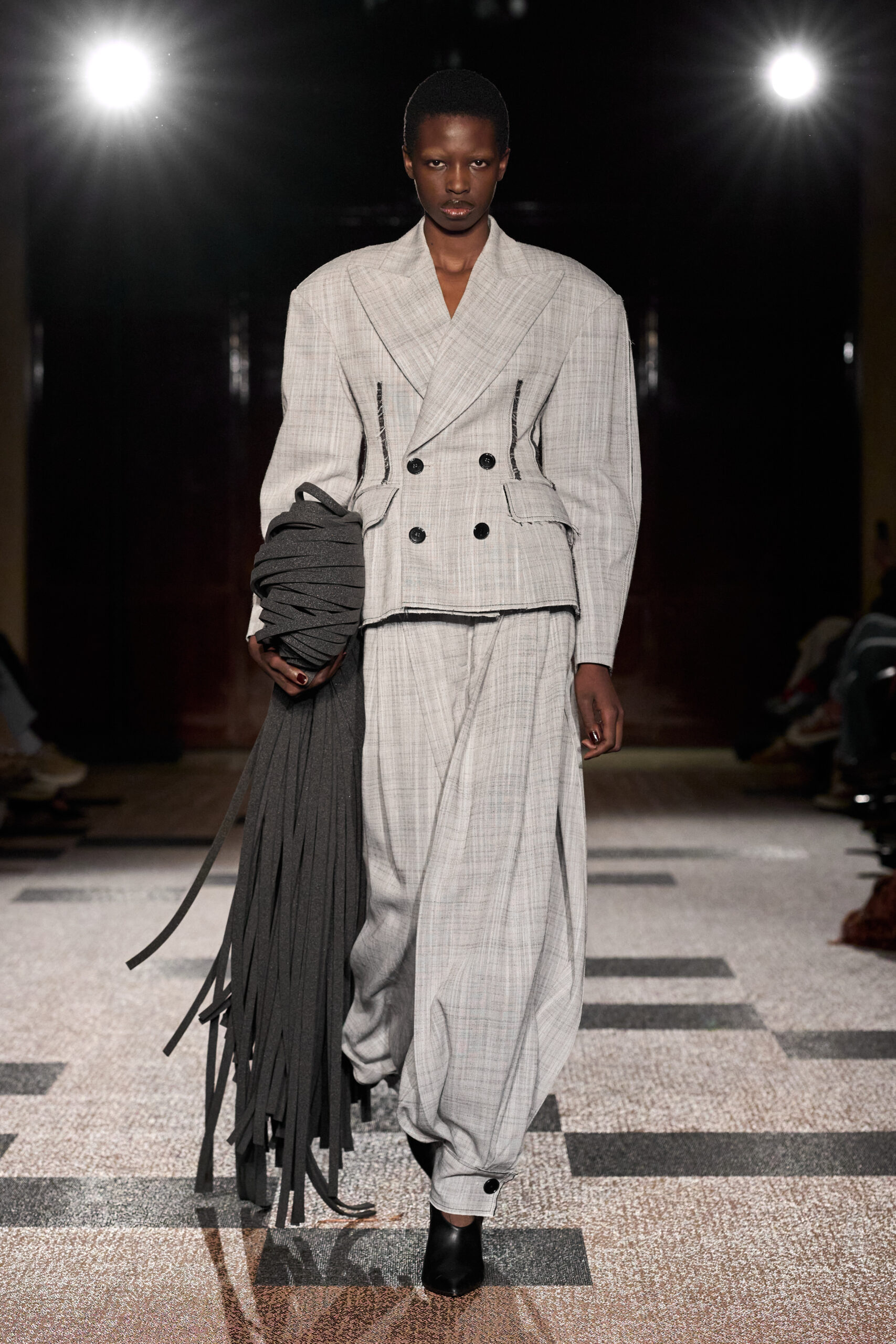
ROKSANDA ILINČIĆ
In another ballroom, in Smith Square Hall, Richard Quinn presented a different side to London’s eveningwear scene. Quinn, who rose to fame with his subversive and fetishy takes on ladylike florals and has since gained a fanbase of couture clients, fully embraced the evolution of his brand with a parade of romantic silhouettes inspired by the classic shapes of couture and dripping with surface decoration. Exemplified by Quinn’s taste for contrasts – black with white or pink – the collection was framed by garlands of wedding-y flowers, scored with an emotive live orchestra and choir, and led by Naomi Campbell. It represented a side to LFW that’s risen in the last ten years: the no-holds-barred, unironic celebration of a kind of glamour emblematic to the city’s communities of socialites with a capital S. The cast of the new Real Housewives of London would swoon.
At Ahluwalia and Aaron Esh, the overt fashion gestures were somewhat more toned down, but both designers represent similar ideas of honing and elevating a defined expression. Here, it’s more about creating wardrobes, a realistic sentiment that wasn’t really spoken about in the so-called heyday of LFW. Where Ahluwalia creates ready-to-wear in its truest form – this season was characterized by essential pieces invigorated by fringing and prints – Esh painstakingly refines his darkly romantic rock ‘n’ roll tailoring and cocktail dresses through technique and fabrication. It creates a pragmatic but very studied wardrobe that brings a sense of rationality that’s new to London Fashion Week. In dialogue with Yaku’s wild expressions and Roksanda’s artsy glamour, it illustrates the many different elements BFC CEO Laura Weir has to work with in the re-creation of a collective community spirit to match that of its glory days.
